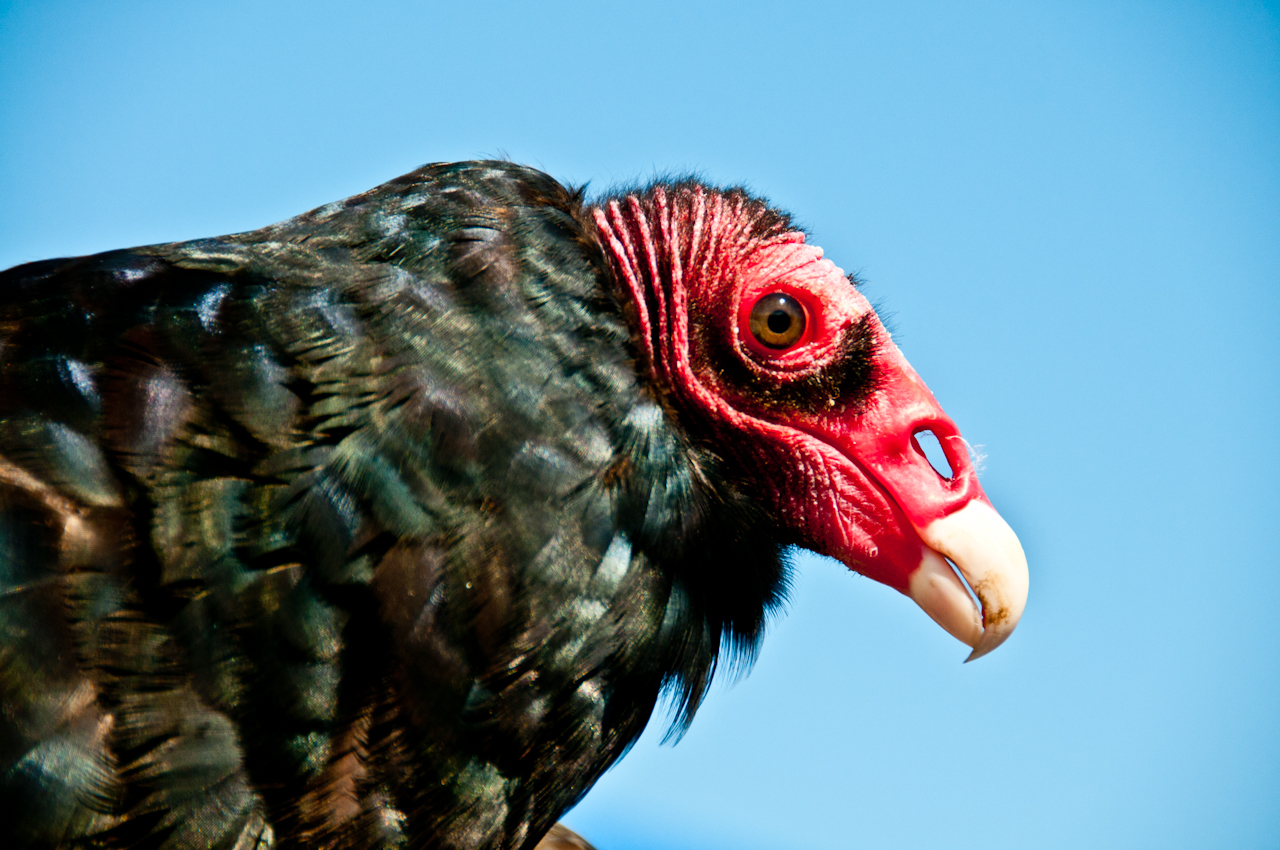Turkey vultures — sometimes called buzzards — are large, dark, hawklike birds with long, broad wings that often soar in groups.
Vultures may have a bad reputation, especially to the uninformed, because they eat rotten meat — the smellier the better. Circling overhead they can smell a carcass hidden by trees. Once they zero in, a wake of vultures soon gathers for the feast. This is the only time you may hear them. They’re quiet, except when they’re fighting over food.
LISTEN to the story:
Turkey vultures are good at finding all kinds of bad odors, including the rotten-egg smell of natural gas. In fact, energy companies out West used to watch where vultures congregated to locate leaks in their pipelines.
Vultures’ eating habits are helpful too. They can devour anthrax-infected animals because their powerful stomachs protect them. When the vulture cleanup crew eats a carcass, they remove dangerous toxins from the environment, saving the rest of us from exposure to really dangerous stuff.
But even vultures have limits. They can’t eat frozen food. So turkey vultures travel south in the fall for warmer climes. On peak days in October, 150,000 vultures can pass the hawk watching site in Veracruz on Mexico’s Gulf Coast.
They fly back in March, when their breeding instincts kick in. Look for them overhead now, but it will take some observation to tell them apart from hawks or eagles. There are two big clues to help you out. Turkey vultures soar with their wings held in a shallow V — called a dihedral — and they teeter side to side in the air. They hold their wings stiff, rarely flapping, and rock from side to side to make course corrections.
So if you see a large, dark hawklike bird making lazy circles in the sky, look for the teetering and its wings held in a shallow “V.” The “V” is for vulture.
###
Bird calls for this segment were provided by The Macaulay Library at Cornell Lab of Ornithology and recorded by Dolly Minis

